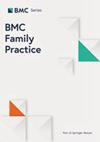Prescription writing pattern among the dental practitioners of a tertiary care hospital in Karachi
IF 3.2
3区 医学
Q1 MEDICINE, GENERAL & INTERNAL
引用次数: 0
Abstract
To identify the frequency and types of prescription errors, assess adherence to WHO prescribing indicators, and highlight the gaps in current prescribing practices of Junior dental practitioners in a tertiary care hospital in Karachi, Pakistan. This cross-sectional study was conducted from January 2021 to March 2021. The study included the prescriptions by house surgeons and junior postgraduate medical trainees for walk-in patients visiting the dental outpatient department. A total of 466 prescriptions were evaluated for WHO core drug prescribing indicators. The prescription error parameters were prepared by studying the WHO practical manual on guide to good prescribing and previous studies. Prescription errors, including errors of omission related to the physician and the patients, along with errors of omission related to the drug, were also noted. The statistical analysis was performed with SPSS version 25. Descriptive analysis was performed for qualitative variables in the study. The average number of drugs per encounter was found to be 3.378 drugs per prescription. The percentage of encounters with antibiotics was 96.99%. Strikingly, only 16.95% of the drugs were prescribed by generic names and 23.55% of drugs belonged to the essential drug list. The majority lacked valuable information related to the prescriber, patient, and drugs. Such as contact details 419 (89.9%), date 261 (56%), medical license number 466 (100%), diagnosis 409 (87.8%), age and address of patient 453 (97.2%), form and route of drug 14 (3%), missing drug strength 69 (14.8%), missing frequency 126 (27%) and duration of treatment 72 (15.4%). Moreover, the wrong drug dosage was prescribed by 89 (19%) prescribers followed by the wrong drug in 52 (11.1%), wrong strength in 43 (9.2%) and wrong form in 9 (1.9%). Out of 1575 medicines prescribed in 466 prescriptions, 426 (27.04%) drug interactions were found and 299 (64%) had illegible handwriting. The study revealed that the prescription writing practices among junior dental practitioners are below optimum standards. The average number of drugs per encounter was high, with a significant percentage of encounters involving antibiotics. However, a low percentage of drugs were prescribed by generic name and from the essential drug list. Numerous prescription errors, both omissions and commissions, were identified, highlighting the need for improved training and adherence to WHO guidelines on good prescribing practices. Implementing targeted educational programs and stricter regulatory measures could enhance the quality of prescriptions and overall patient safety.卡拉奇一家三级医院牙科医生的处方书写模式
目的:确定处方错误的频率和类型,评估世界卫生组织处方指标的遵守情况,并强调巴基斯坦卡拉奇一家三级甲等医院的初级牙科医生在当前处方实践中存在的差距。这项横断面研究于 2021 年 1 月至 2021 年 3 月进行。研究对象包括牙科门诊部的内科医生和初级研究生实习医生为门诊病人开具的处方。共对 466 份处方进行了世卫组织核心药物处方指标评估。处方错误参数是通过学习世界卫生组织的《良好处方指南实用手册》和以往的研究而准备的。处方错误包括与医生和患者有关的遗漏错误,以及与药物有关的遗漏错误。统计分析使用 SPSS 25 版本进行。对研究中的定性变量进行了描述性分析。结果发现,每次就诊的平均药物数量为每张处方 3.378 种药物。使用抗生素的比例为 96.99%。令人吃惊的是,只有 16.95% 的处方药使用了通用名,23.55% 的药物属于基本药物目录。大多数处方缺乏与处方者、病人和药物相关的有价值信息。如联系方式 419(89.9%)、日期 261(56%)、医疗许可证号 466(100%)、诊断 409(87.8%)、患者年龄和地址 453(97.2%)、药物剂型和途径 14(3%)、缺失药物强度 69(14.8%)、缺失频率 126(27%)和治疗时间 72(15.4%)。此外,89 名(19%)处方医生开错了药物剂量,其次是 52 名(11.1%)处方医生开错了药物,43 名(9.2%)处方医生开错了药物浓度,9 名(1.9%)处方医生开错了药物剂型。在 466 份处方中开出的 1575 种药物中,发现 426 种(27.04%)药物相互作用,299 种(64%)字迹模糊。研究显示,初级牙科医生的处方书写习惯低于最佳标准。每次开具处方的平均药物数量较高,其中涉及抗生素的处方占很大比例。然而,处方中使用通用名和基本药物清单中药物的比例很低。发现了许多处方错误,既有遗漏也有遗漏,这凸显了加强培训和遵守世界卫生组织良好处方规范指南的必要性。实施有针对性的教育计划和更严格的监管措施可以提高处方质量和患者的整体安全。
本文章由计算机程序翻译,如有差异,请以英文原文为准。
求助全文
约1分钟内获得全文
求助全文
来源期刊

BMC Family Practice
医学-医学:内科
CiteScore
3.20
自引率
0.00%
发文量
0
审稿时长
4-8 weeks
期刊介绍:
BMC Family Practice is an open access, peer-reviewed journal that considers articles on all aspects of primary health care research. The journal has a special focus on clinical decision making and management, continuing professional education, service utilization, needs and demand, and the organization and delivery of primary care and care in the community.
 求助内容:
求助内容: 应助结果提醒方式:
应助结果提醒方式:


